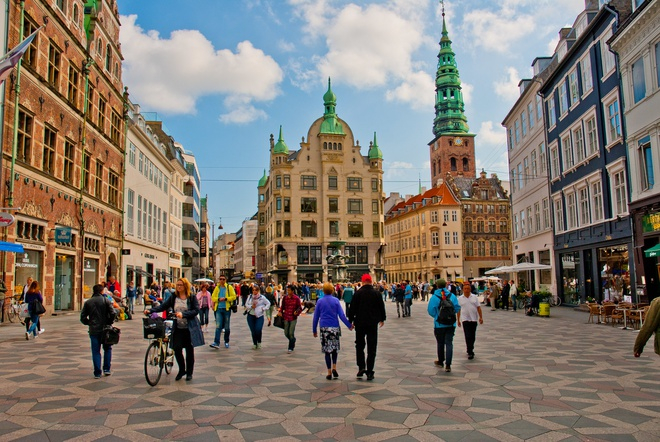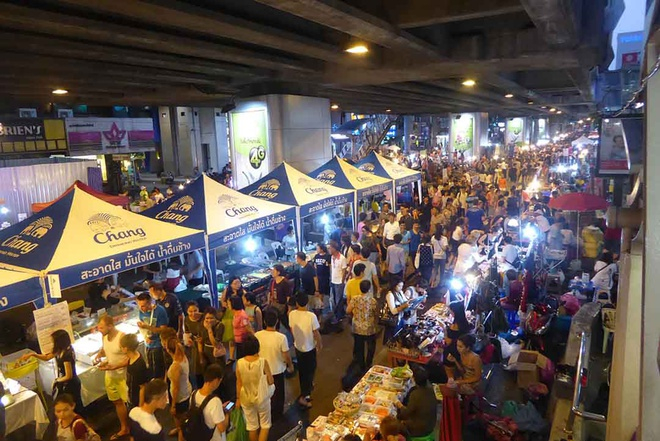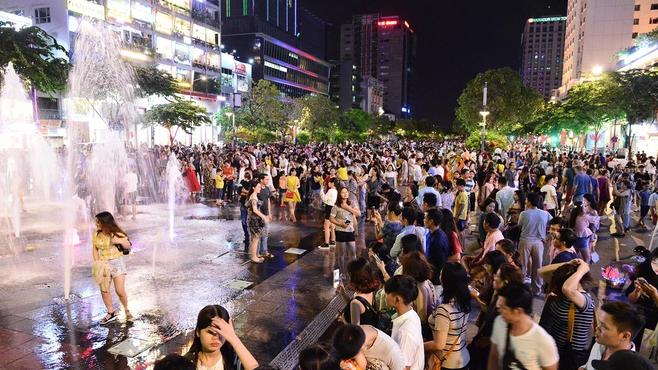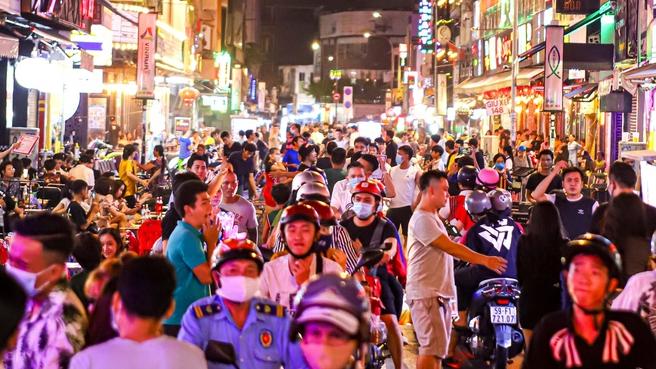The pedestrian street not only reduces fine dust and air emissions for the city, but also promotes commercial and business activities in the area.

Die Zeil Walking Street (Frankfurt) is Germany's largest shopping street. According to data from Planetizen in 2019, about 11,420 people visit this neighborhood every day. Founded in 1992, Die Zeil also focuses on many shopping centers and shops serving the needs of relaxation, walking and shopping. Photo: Frankfurt.

Exhibition Road (London) built in 2011 is one of the most famous pedestrian streets in the world. According to KBOC, the number of visitors and pedestrians here quadrupled between 2013 and 2018. Many major art museums like the Victoria and Albert Museum, Science Museum and Natural History Museum are also located on this street. Photo: The Times UK.

Stroget Street in Copenhagen is Denmark's most famous pedestrian street. According to Global Designing Cities, Stroget Street helps increase pedestrian space by 6 times. In addition, Stoget facilitates the development of catering services with 7,020 outdoor cafe seats and a 400% increase in the likelihood of stopping and staying in Copenhagen. Photo: Flickr.

The Silom night market street in Thailand attracts millions of tourists every year. Established in 2001 with a 6-lane length of about 1 km, Silom Walking Street is a busy commercial area, attracting 50,000-150,000 visitors on weekends. The concentration of exhaust gas and fine dust in the air also decreased significantly after the construction street pushed people to walk more. Photo: Touristbangkok.

Dong La Bay is a famous commercial center in Hong Kong. Russet Street shopping street is 250 meters long, often envisioned associated with luxury brands and is the symbol of the luxury fashion industry in Hong Kong. The average rental price here is about 2,671 USD / square foot (in the second quarter of 2018). This is also ranked as the most expensive shopping street in the world, surpassing the busy shopping malls in New York, London or Paris. Photo: Nikkei Asian Review.

Nanjing Street in Shanghai is known as China's number one street. It is estimated that the total annual commercial revenue generated by the Nanjing pedestrian street is 11.6 billion yuan ($ 1.6 billion). The pedestrian traffic here on weekdays is about 800,000 people and on weekends up to 1.3 million people. Photo: Craig Bright.

Nguyen Hue Walking Street (Ho Chi Minh City) was established in 2015, with about 3,300 people walking on weekdays and more than 6,000 people at weekends. According to a survey by the Department of Transport, total estimated spending on Nguyen Hue pedestrian street is about 2.3 billion VND / weekday and 11.8 billion VND / weekend (including expenses for hotels, meals, shopping. , entertainment). Photo: Zing.

Bui Vien Street officially opened in July 2017, is the second pedestrian street in the city. HCM City. Bui Vien Street has more than 5,400 pedestrians / weekdays and 7,100 people / weekends. The Department of Transport estimated estimated spending of 2.8 billion VND / weekday and 8 billion VND / weekend on shopping, dining and entertainment activities here. Photo: Zing.




